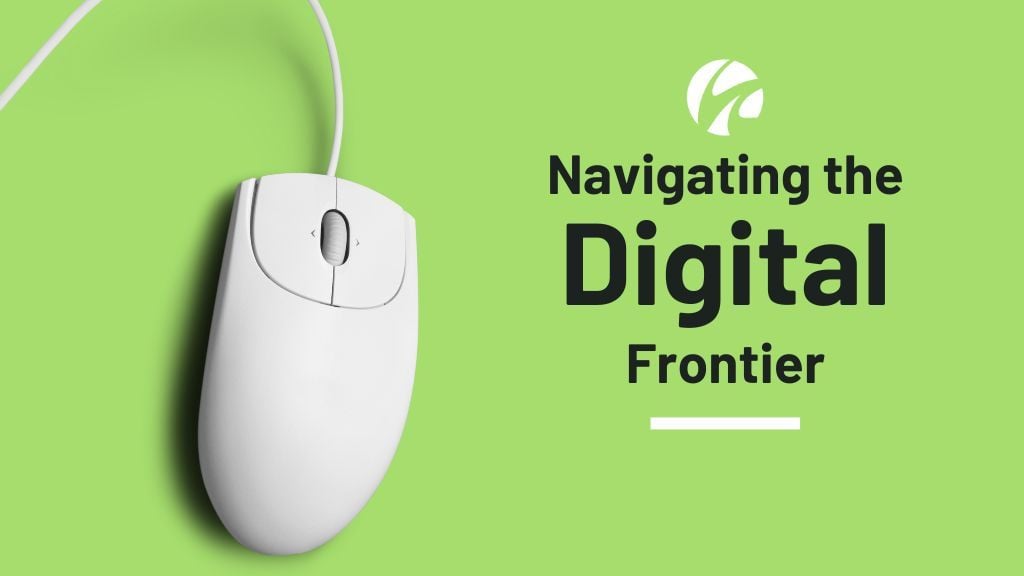4 min read
Five Ways to Track the ROI of Digital Investments
If you’re in a leadership role at an accounting firm, chances are you’re familiar with the importance of investing in digital. In fact, 83% of...
6 min read
by:
 David Toth
on
Sep 01, 2022
David Toth
on
Sep 01, 2022

David empowers firms to grow strategically by aligning innovation, insight, and execution. He leads WRC’s signature programs and advises firm leaders on M&A, digital growth, and leadership development.
Table of Contents
To achieve sustained success in today’s increasingly online world, it’s imperative accounting firms have a cohesive digital strategy. The era of the digital rainmaker is upon us, and to be successful both today and in ten years’ time, firms simply must have a well-established digital presence that is strategic in nature with clear goals and desired outcomes.
Today, pretty much every business is online. Firms with a compelling digital value proposition are exploding in popularity while those slow to adapt to change are finding low quality or low volume of form submissions. In this environment, an effective digital growth strategy is crucial to success.
But it’s not easy. In recent times, significant gaps have begun to emerge between digital spend and the resulting business performance. It’s possible to throw a lot of money at a digital strategy without seeing a tangible return on investment.
With the right approach, that doesn’t have to be the case.
Partner groups should be gaining clarity on what they’re spending money on and how that spend on digital supports the bigger picture.
In this article, we break down some common issues that can cause this performance gap and discuss strategies your firm can embrace to overcome them. Armed with these insights, you’ll be better placed than ever to outperform your competitors and deliver meaningful digital growth for your firm.
The reality is that no one clear issue causes a gap between performance and results––it’s a complex combination of numerous variables. These factors vary from firm to firm: the challenges holding back a Top 25 firm from digital growth will be entirely different from those faced by an up-and-coming niche practice.
However, there are several common factors that we, in our role as growth strategists for accounting firms, encounter time and time again. Let’s take a closer look at some of these frequently reoccurring issues.
A digital strategy is like an orchestra: when every individual component plays in unison, it’s beautiful. But if everyone’s reading off a different sheet, it’s a mess. Winning digital strategies demand effective leadership and a cohesive, unified approach.
If everyone is pulling in different directions, success is almost impossible. But it’s all too common: one practice area has one strategy, whereas another wants to go a different direction. Maybe the content on your website doesn’t match what’s being put out on social media. Or perhaps your marketing agency is doing one thing while an internal team works on another idea.
The end result of this approach? Confused prospects who find it impossible to understand who your firm is and what you stand for.
Recent years have seen seismic shifts in the digital landscape, and for those new to digital strategy, it’s difficult to keep up. Whether it’s increasing ad rates or the phasing out of third-party cookies, there’s always some new issue waiting to handicap your digital performance.
While the effects of many of these changes primarily affect businesses that are heavily reliant on digital strategies, like eCommerce businesses, the downstream effects are felt by all businesses that rely on digital––accounting firms included.
As new digital channels and technologies emerge, the interactions your firm has with potential clients are growing ever more diverse.
A prospect might first see a LinkedIn post from one of your partners, then visit your blog, then sign up for your newsletter, then attend a virtual event, then read some sales enablement content, and then eventually maybe, just maybe, they’ll schedule an initial phone consultation. And in all honesty, that endless sentence you just read is a gross oversimplification of the process.
Customer journeys are growing increasingly complex, and successfully building out digital strategies across many different mediums is challenging for even the best marketing teams. But these changes aren’t going away anytime soon––what’s most important is how firms react to them.
There’s no magic formula that will transform a firm’s digital strategy overnight. Every firm deals with its own challenges, and solving them to build an efficient, scalable growth machine takes time, hard work, and dedication. But it’s not impossible, and there are certainly best practices for digital performance that you can follow.
Let’s explore four of the most impactful strategies today.
A truly effective digital strategy requires participation from everyone in your firm: the creation of a digital culture. The onus is on leaders to set an example and communicate the strategic importance of digital to the firm’s growth. That means allocating time for partners to spend working on digital strategy; time they otherwise might spend with clients.
Partners are an indispensable part of any digital strategy. You need them to amplify your firm’s reach through their networks, commit to creating thought leadership content in their practice area, and more.
As an industry, accounting has traditionally been relatively risk-averse. Accounting firms tend to follow tried and tested strategies, and few are ever willing to be the first to try something entirely new. But times are changing, and those who aren’t afraid to innovate will be rewarded.
Commit to a growth mindset. That means relentlessly experimenting with new strategies and constantly refining and optimizing your approach to maximize your likelihood of success. Part of this is embracing data-driven decision-making and aligning your digital strategy with the firm’s overall business goals. Fortune favors the bold, and for your firm to outperform peers, you have to constantly be pushing the boundaries.
While there are certainly proven digital frameworks, every digital strategy is different. To be successful, tailor your strategy to a target audience that your firm is well-positioned to serve. Defining that target audience requires your firm’s leadership to answer some big questions: are there any niches or practice areas your firm should focus on? Do you want to grow on a local, state-wide, or national scale? Prioritizing areas of growth is critical to closing the gap on digital spend and performance.
For your strategy to deliver results, you must start with a clear vision of where your firm’s best opportunities for growth lie. With that knowledge, you can reverse-engineer a digital strategy that capitalizes on these growth opportunities.
Rome wasn’t built in a day, and neither is a successful digital strategy. Not every potential client needs your services right now. However, you need to build awareness and familiarity so that when they do, they think of your firm. The effectiveness of digital strategy cannot be measured over a short time period––success can take months or even years in some cases.
Focus on building long-term, strategic relationships with prospects and clients. Invite them to events, touch base with them regularly, connect on LinkedIn, and produce content that educates them on interesting concepts. Think about the costs associated with this as an investment in your future relationship. Over time, and as the effects of this compound, you’ll begin to see remarkable returns.
What does this look like in the real world?
To answer that, we asked Amanda Zeigler from Centri Consulting. Amanda has spearheaded powerful growth initiatives at her firm, and has thought remarkably outside of the box when it comes to creating effective digital strategies.
She explains, “When I started at Centri, we would work with companies with revenues that could be upward of $100M, $500M, into the billions. But we were missing a whole segment with start-ups and emerging growth organizations. They were clearly looking for additional support in accounting and advisory activities. Our CEO and I talk a lot about the fact that we don’t want people to get to our main website and think they aren’t big enough to work with us. So, we created Powered by Centri as a microsite. It is another website to provide organizations with a tangible set of services that meet the needs of a startup or emerging growth company. Their accounting and finance function is being powered by the experts at Centri.”
She expands on how this idea evolved: “When we started developing the website, it was important to us that it didn’t look exactly the same as Centri Consulting, but it felt like you were in the same family. It was very important that we had an iteration of our regular Centri Consulting branding for the powered by Centri website.”
Amanda and team are seasoned in digital-first approaches: “We focused a lot on our branding over the years. We have brand guidelines. When I started at the firm three years ago and we were a 45-person firm, it didn’t seem like our highest priority. But it’s funny because that foundation has been able to grow and expand with the organization as we’ve grown and expanded. Now we’re approaching 150 people and it has scaled and that branding has been very important.”
She reiterates: “Branding is one of those intangibles. There can often be a short shelf life on implementation of a branding strategy. I just got here at the right time and there was a willingness to do it. You have to have an idea of who you are and who you’re not. Even if you start with those very basic ideas, it can propel your brand further, even if you’re just asking the questions. Then it becomes very clear how you show up in internet marketing activities, on a secondary website, on your current website; it drives a lot of SEO and PPC activities. All of these are part of the internet marketing portfolio of activities.”
Amanda and her CEO came together to:
Three years later, the resulting outcome is a 3x increase in organizational size, effectively closing the gap between digital spend and digital performance.
Achieving sustained digital growth is far from easy and there’s no denying the existence of issues that cause a gap between digital spend and performance. But with the right approach, it’s absolutely possible to address these challenges and build a growth engine that enables you to sustainably scale your firm.
At Winding River Consulting, we specialize in crafting and executing bespoke digital strategies for top accounting firms. Our expert consultants partner closely with your team to understand your goals and priorities before delivering a winning digital roadmap.
Interested in learning more about how we work? Contact us today.

4 min read
If you’re in a leadership role at an accounting firm, chances are you’re familiar with the importance of investing in digital. In fact, 83% of...

4 min read
In the ever-evolving terrain of professional services, digital strategy stands as a beacon of innovation and progress. Yet, it's often relegated to...

4 min read
The business development landscape for accounting firms has experienced a dramatic change over the past year. With new strategies and techniques...